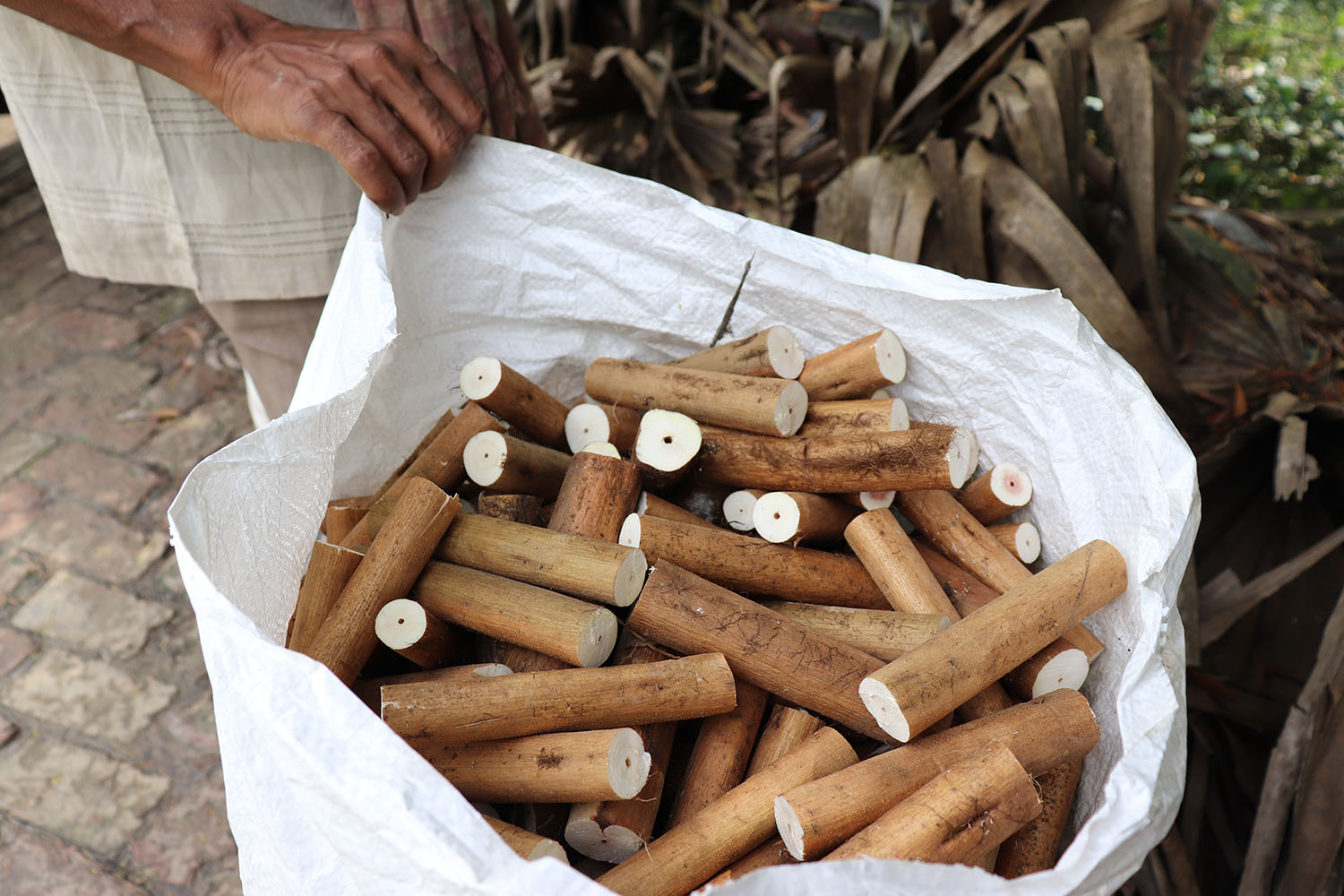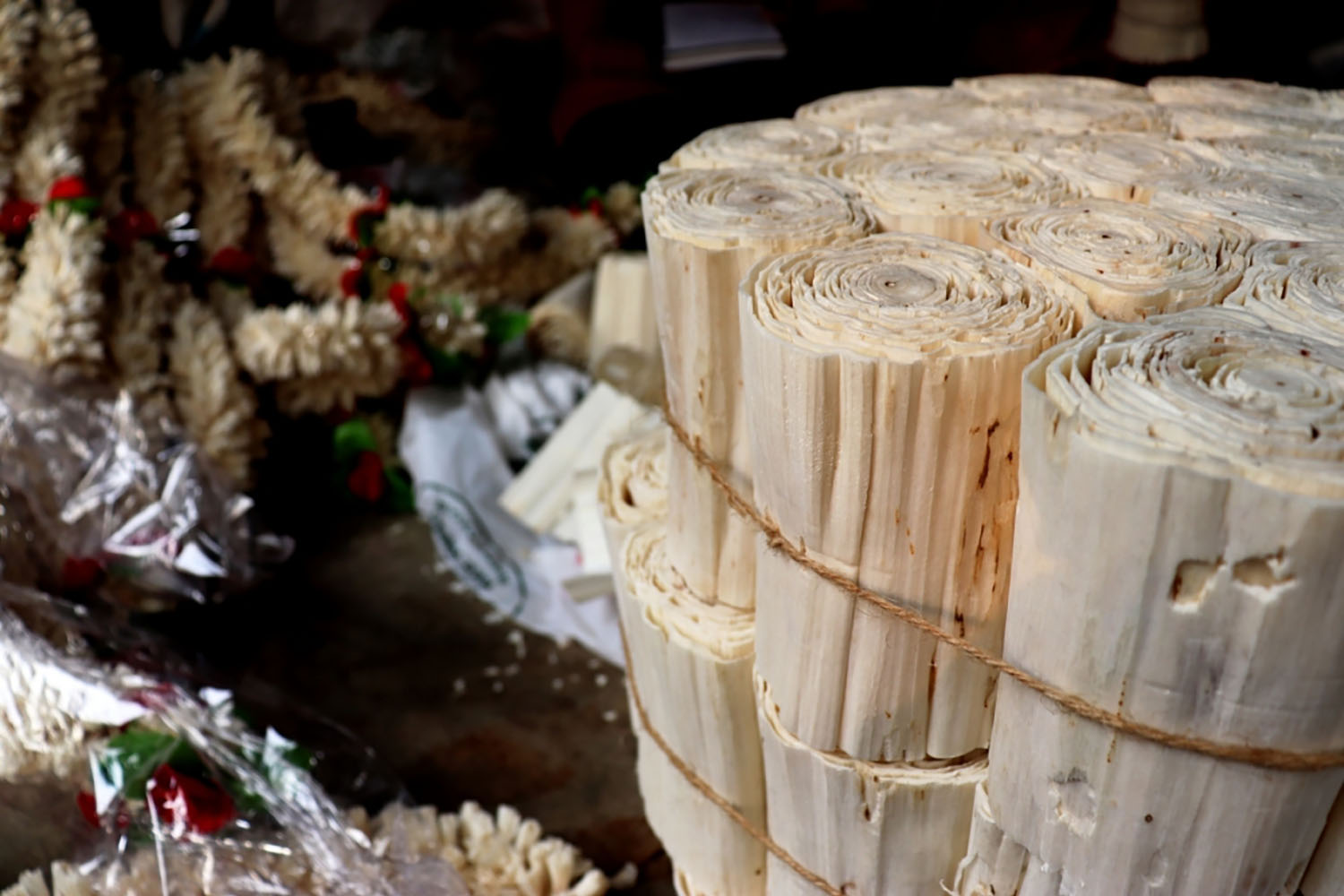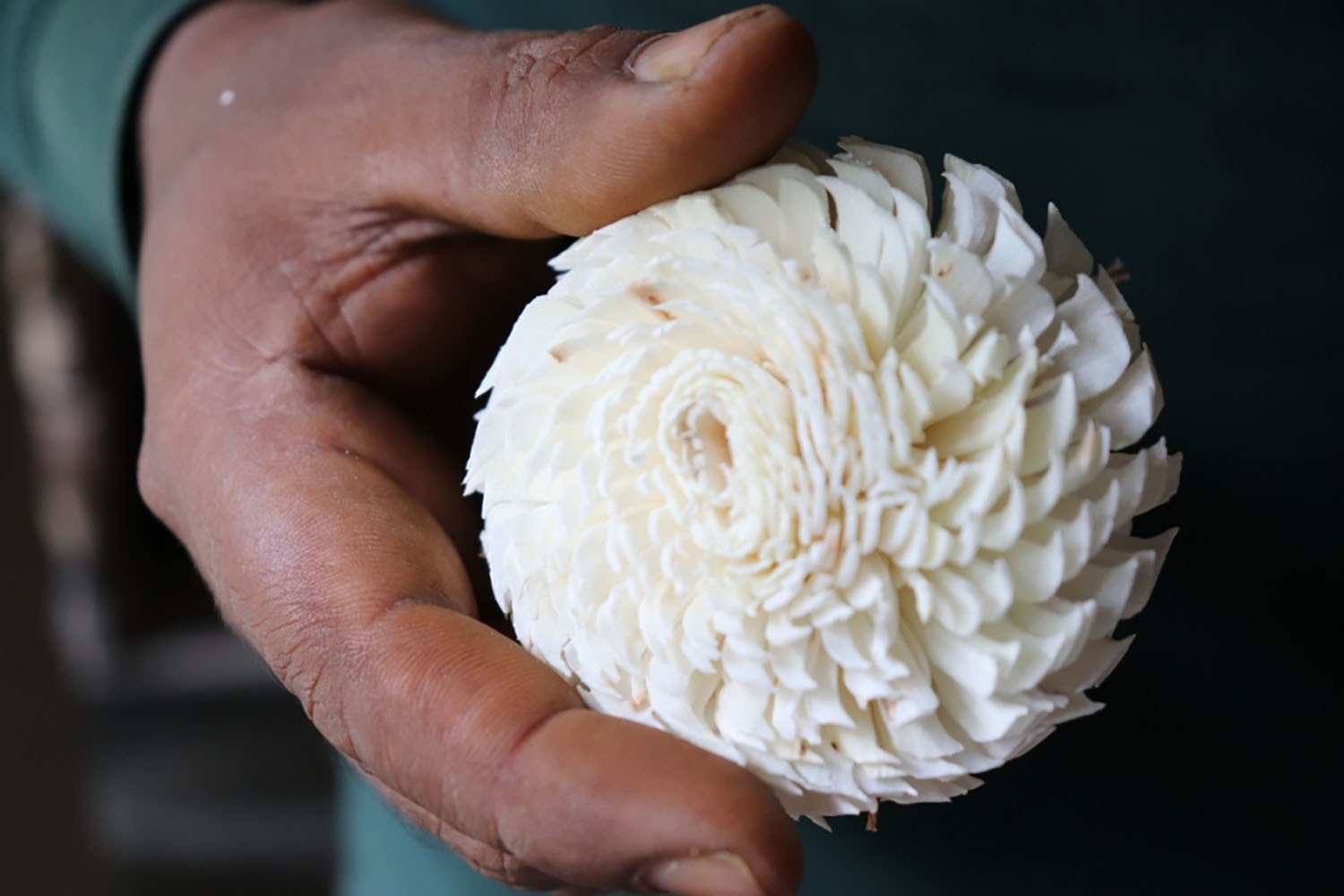ARTICLE
Sholapith
The objects the shola is used to make today serve specific functions such as the topor and mukut, traditional head accessories worn by the bride and groom in a Bengali wedding; torso and heads of the puppets made by the Muragachha Colony and Borboria village in Nadia district; the daak-e-shaaj, or decorations that are a part of the Durga Puja festivities. The sholapith craft is also famous in parts of Odisha where it is used to create headgears for the deity Jagannath and his siblings during the Rathayatra festivals and boats for the Boita Bandana or the Bali Yatra festival held during Kartik Purnima. The sholapith craft is also known as netti in Tamil Nadu.
Bibliography
Encyclopedia of Crafts in Asia Pacific Region. “Pith craft of Tamil Nadu and West Bengal.” Accessed November 26, 2021. https://encyclocraftsapr.com/pith-craft-of-tamil-nadu-and-west-bengal/.
D’Source. “Shola Pith Topor – Kolkata.” Accessed November 26, 2021. https://www.dsource.in/resource/shola-pith-topor-kolkata/introduction.
Ghosh, Kundan. “Sholapith Craft of West Bengal: An Overview.” International Journal of Interdisciplinary and Multidisciplinary Studies, vol 3, no.1 (2015): 54-62. http://www.ijims.com/uploads/3061d2421fc9e0fe53168.pdf.
Mukherjee, Sreya. “Sholapith: Herbal Ivory of Bengal.” Sahapedia. July 03, 2018. Accessed November 26, 2021. https://www.sahapedia.org/sholapith-herbal-ivory-of-bengal-0.
Chatterjee, Baijayanti. “Conditions of Sholapith Craftspeople in Rural Bengal.” Sahapedia. July 03, 2018. Accessed November 26, 2021. https://www.sahapedia.org/conditions-of-sholapith-craftspeople-rural-bengal.
Gangopadhyay, Uttara. “A Traditional Craft Material is Trying to Transcend its Regional Boundary and Enter the International Market.” Outlook India. August 10, 2019. Accessed November 26, 2021. https://www.outlookindia.com/outlooktraveller/explore/story/69765/sholapith-an-eco-friendly-traditional-craft-from-bengal.










